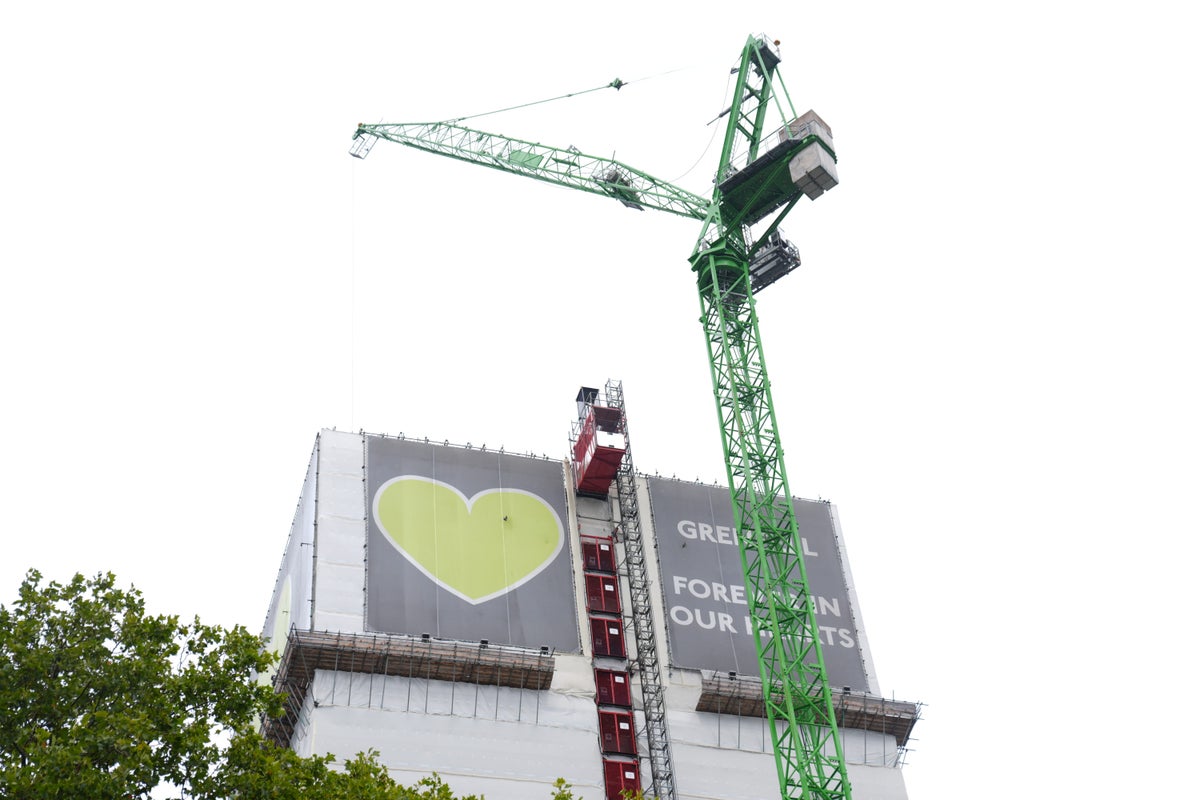
A likely two-year process to demolish Grenfell Tower is beginning this week.
The Government announced earlier this year that the remains of the building in west London – where a deadly fire in 2017 claimed the lives of 72 people – will be brought down.
Preparations had been taking place over the summer and work to remove a former plant room, which previously housed heating and a water tank, on top of the tower is to start this week.
After this part, which could take weeks, is completed, work to remove the tower’s 24th floor – the top storey – will begin.
The floor-by-floor work is being carried out by Deconstruct UK (DUK), which has been involved in the maintenance of the site since 2017.
The Government has pledged that the dismantling will be carried out “with great care and sensitivity” and said the plan for careful deconstruction “is designed to minimise noise and disruption” in the area.
What is left of the tower has stood in place in the eight years since the disaster, with a covering on the building featuring a large green heart accompanied by the words “forever in our hearts”.
The Government has said a banner will remain on the building, being moved down as work progresses.
Confirmation earlier this year that the tower was to be demolished was met with criticism from some of the bereaved and survivors of the deadly blaze who expressed their upset and shock, saying they felt they had not had their views considered before the decision was taken.
Deputy Prime Minister and Housing Secretary Angela Rayner later said in an interview that she knew her meeting with those most closely affected was going to be “really difficult” and that there was “not a consensus” among everyone over what should happen to the tower.
Views have varied, with her department acknowledging there had been hopes for some of it to remain in place as a memorial to what happened while others had reported this would be “too painful”.
Some of the bereaved and survivors had hoped it would stay in place until a point where charges were brought against those they deem responsible for the fire.
Police and prosecutors have previously said investigators would need until the end of 2025 to complete their inquiry, with final decisions on potential criminal charges by the end of 2026.
The near 10-year wait for justice has been described by families as “unbearable”.
The Government confirmed in February that engineering advice is that the tower “is significantly damaged” and will get worse with time.
Separately, the Grenfell Tower Memorial Commission has been consulting on plans for a permanent memorial in the area of the tower, with recommendations including a “sacred space”, designed to be a “peaceful place for remembering and reflecting”.
It is expected a planning application for a memorial could be submitted in late 2026.
The Government said it will also share further information about plans for a second site where materials from the tower “which are not used in the memorial, or conserved, will be safely and respectfully laid to rest”.
The final report of the Grenfell Tower Inquiry, published in September 2024, concluded the disaster was the result of “decades of failure” by governments and the construction industry to act on the dangers of flammable materials on high-rise buildings.
A Ministry of Housing, Communities and Local Government spokesperson said: “We recognise Grenfell Tower has a deep personal significance to the Grenfell community, and our thoughts remain with the bereaved families, survivors and all those affected.
“As work begins to carefully take the tower down, we want to assure the community that it will be undertaken with great care and sensitivity.
“We remain committed to ensuring what happened at Grenfell Tower is remembered and we will keep the community’s voice at the heart of our work to deliver the vital change needed so what happened can never happen again.”
